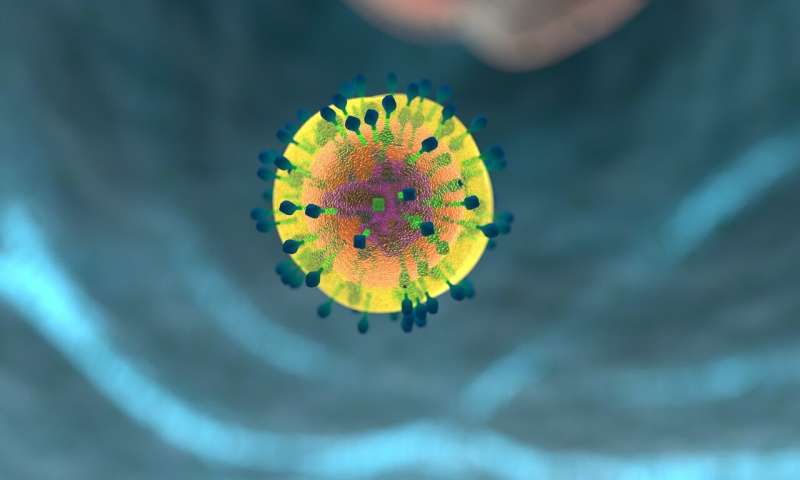This article has been reviewed according to Science X's editorial process and policies. Editors have highlighted the following attributes while ensuring the content's credibility:
fact-checked
peer-reviewed publication
trusted source
proofread
A lab-on-a-chip for T cell screening and sorting

Currently, it is a difficult and laborious process to place two cells in contact with each other to examine their binding characteristics. It is however a necessary step in understanding how cells interact in the hopes of finding novel cancer treatments, especially cell-based cancer immunotherapies.
EPFL researcher Clémentine Lipp's new technology brings a significant improvement in this field by combining two different trapping technologies in a lab-on-a-chip system, enabling high-throughput analysis of essential cell to cell interactions. The results of her work have been published in the journal Lab On A Chip.
"When I tell people what I do, the easiest way to explain it is to say that I create a speed-dating environment for cells," says Lipp. And while this may sound as if she's half-joking, the analogy is an apt one. Understanding cell to cell interaction is essential in many scientific endeavors, and accelerating the process will likely speed up entire fields of study.
In cell therapy specifically, cancer researchers are looking for T cells that can respond to and destroy tumor cells. In order for a T cell to trigger a response of the immune system it must attach itself to the tumor cell through its specialized receptor, a parameter known as its adhesion state.
Up until now, individual cells or cell populations needed to be manually placed in contact with each other in difficult to manipulate microscopic environments. Whereas the new microfluidic tool allows independent control of these two types of cells, with the potential to revolutionize cell screening for T cells and other applications.
In a microfluidic device, also known as a lab-on-a-chip, cells are introduced into a maze of microscopically small channels and propelled through the pathways using the flow of the liquid. These miniature laboratories, first appearing in the 1980s, offer many advantages over conventional methods: they are faster, smaller, customizable, more precise, and allow for automation.
To study cell interaction with fluids and other cells, the cell or cells need to be trapped, or held in a specific place. For T cell screening in such a device, researchers would need to trap both the T cell and the tumor cell without damaging the cell—a feat that was not yet possible and has previously excluded T cell screening from the advantages of lab-on-a-chip technology.
The novelty of Lipp's device is that it brings T cell screening into the microfluidics world by combining two trapping methods: one based on planar hydrodynamic trapping of cells and another on dielectrophoretic (DEP) trapping.
These hydrodynamic traps rely on microscopic holes that trap the cell through changes in pressure within the liquid environment—think of gently sucking up a baseball with a vacuum hose to hold it in place, but thousands of times smaller. Whereas DEP trapping involves an entirely different technology that takes advantage of a cell's polarity to electrically trap it by turning on and off electrodes. Both trapping techniques involve microfabrication and are impressive examples of precision microengineering.
The combination of these two distinct trapping systems enables the independent manipulation of cells in the microfluidic device, offering spatial and temporal control over their contact.
As a result, different adhesion assays can be performed on the chip, making it a versatile tool for various immunological studies. The new microfluidic chip is designed to preserve cell integrity and receptor functions, paving the way for the development of larger throughput devices through automation.
Combining this technology with automation should lead to faster and more cost-effective T cell screening and sorting, making cell-based immunotherapies more accessible and widely applicable.
More information: Clémentine Lipp et al, Microfluidic device combining hydrodynamic and dielectrophoretic trapping for the controlled contact between single micro-sized objects and application to adhesion assays, Lab on a Chip (2023). DOI: 10.1039/D3LC00400G



















